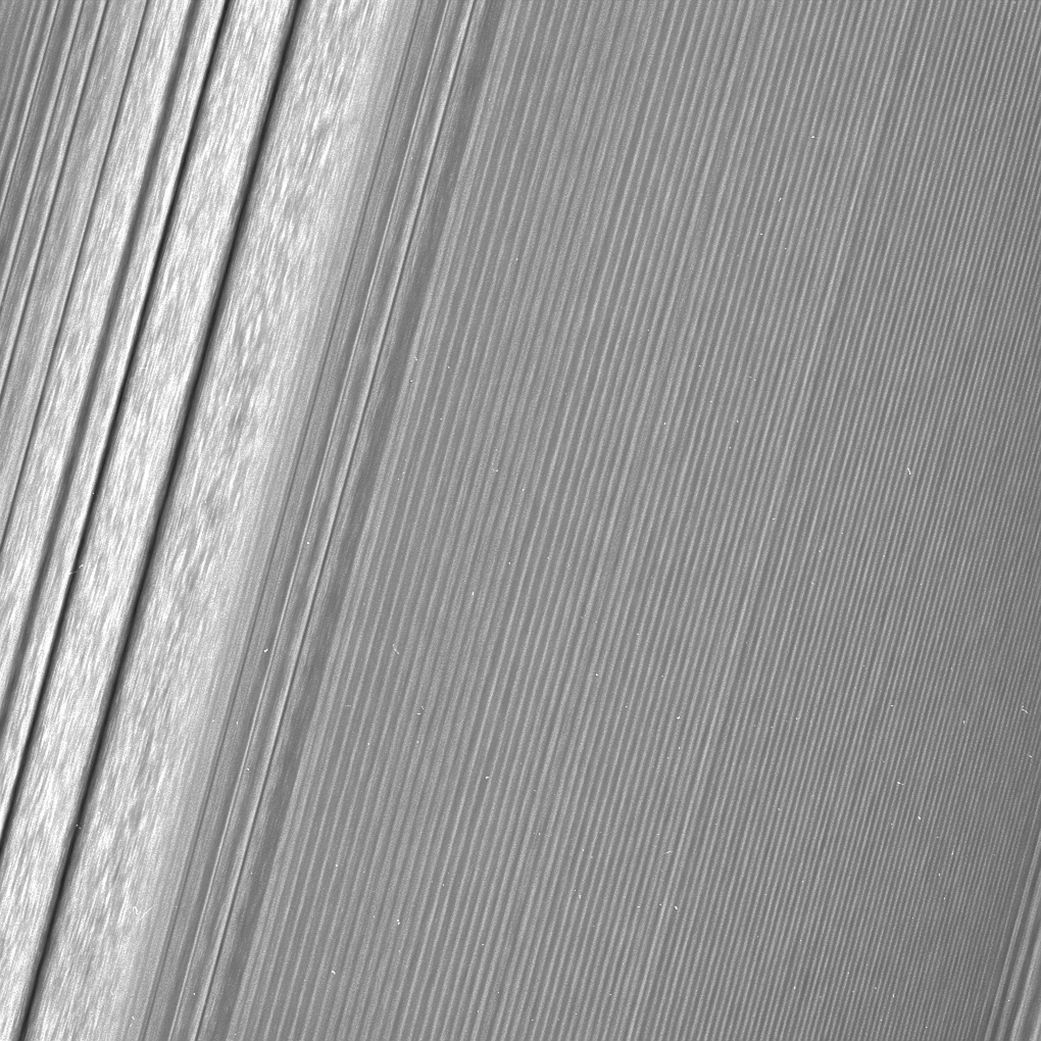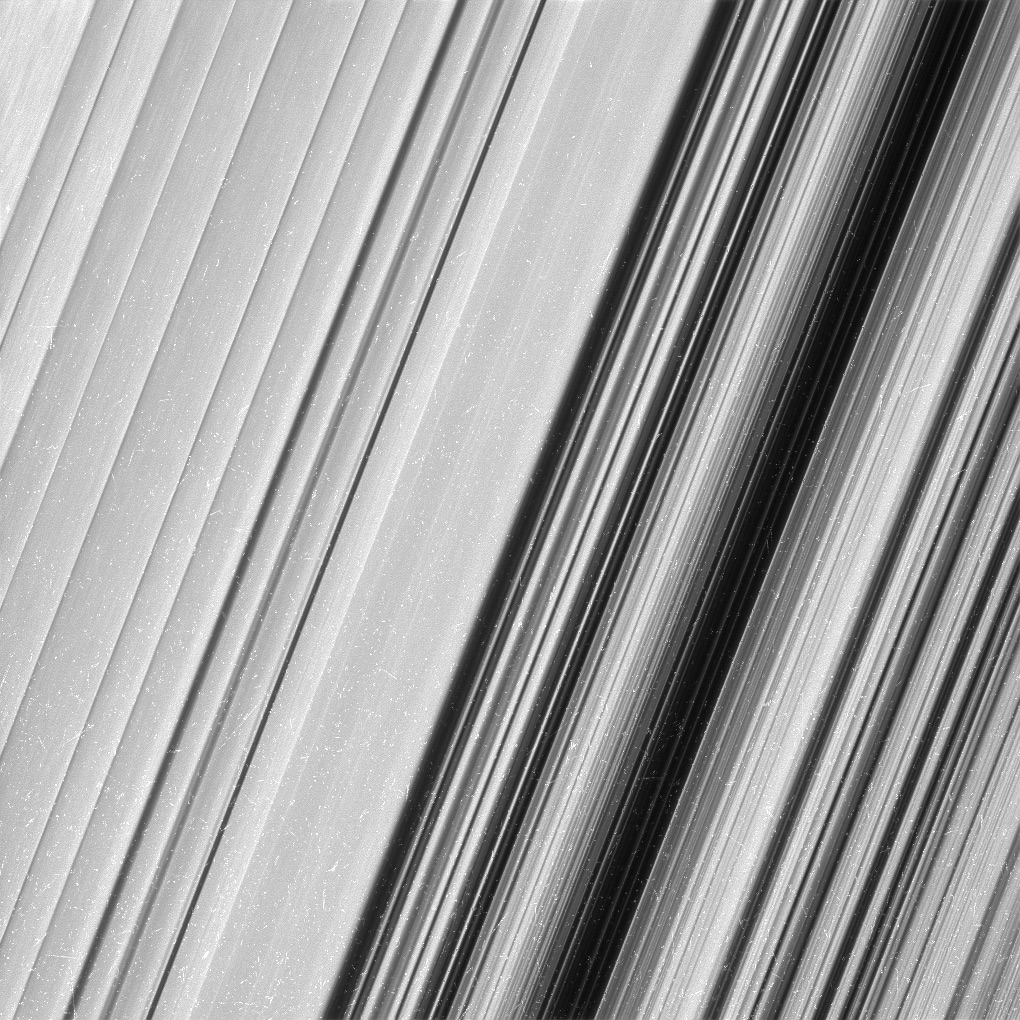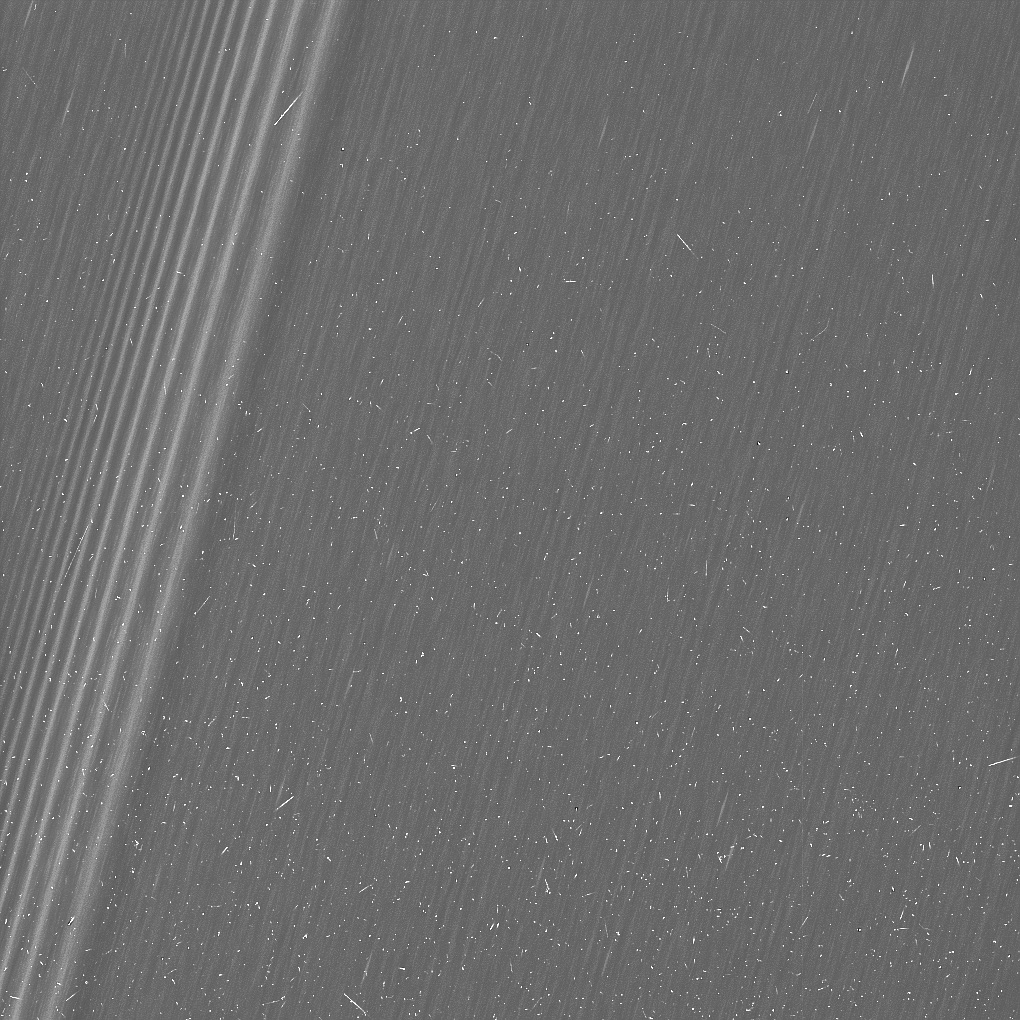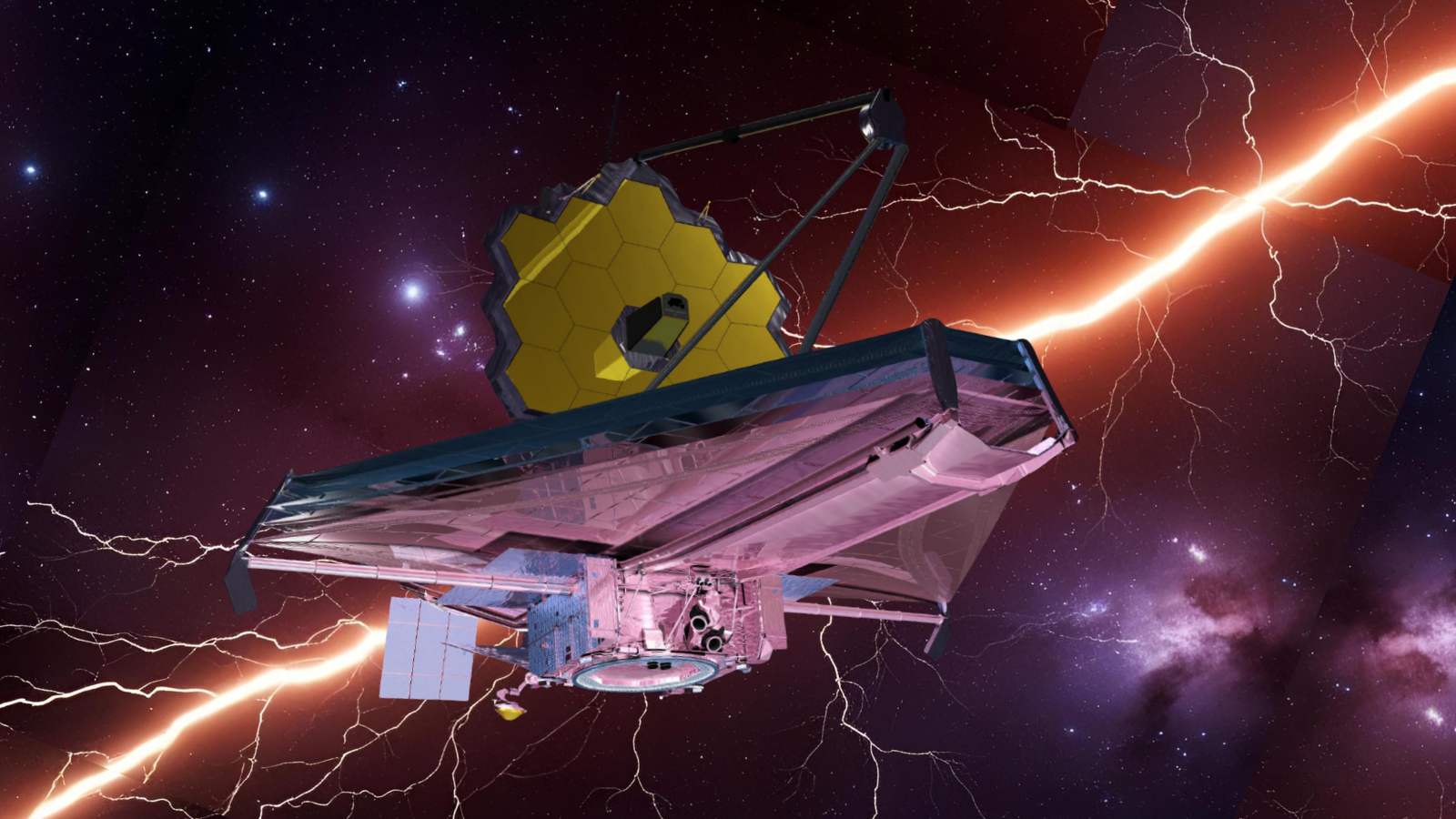Saturn's Rings Just Got the Ultimate Close-Up from Cassini (Photos)
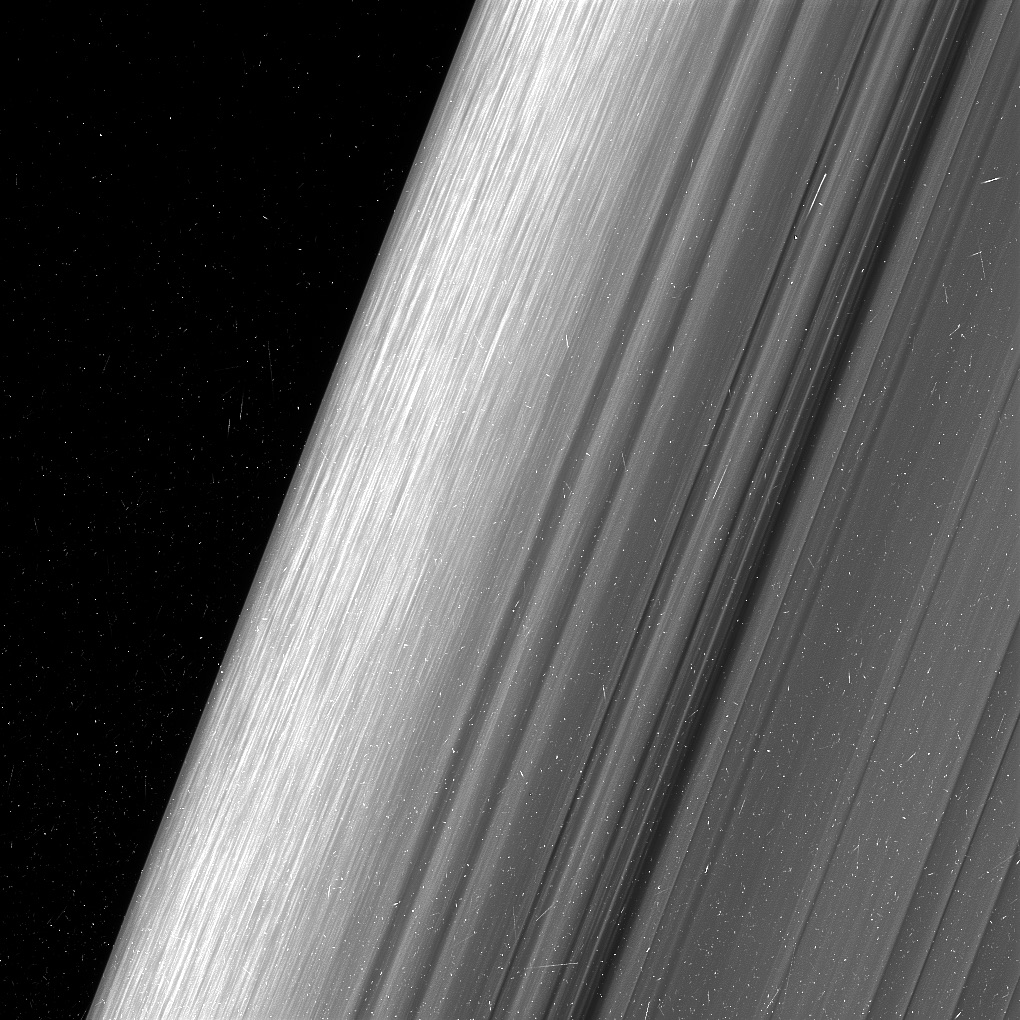
Saturn's rings appear as bright waves against a black sky in detailed new pictures from the Cassini spacecraft, which made its closest pass by the icy debris in years.
The rings of Saturn are visible even in a small telescope from Earth, and they are embedded with icy particles ranging from dust- to house-size chunks.
The new views of the rings provide scientists with more details on clumping particle structures called "straw" and features called "propellers" generated by moonlets embedded in the rings. It's the best view scientists have gotten since discovering those features in 2004 and 2005, respectively, shortly after Cassini's arrival at Saturn, NASA said in a statement. [Saturn's Glorious Rings in Pictures]
Cassini is in its last year of operations as the spacecraft positions itself to make a suicidal plunge into Saturn in September. The probe is halfway through the completion of 20 orbits that graze past the outer edge of the main ring system of Saturn. Next, Cassini will make 22 orbits between the rings and Saturn before taking a swan dive into the gas giant.
"Cassini came a bit closer to the rings during its arrival at Saturn, but the quality of those arrival images was not as high as in the new views," NASA officials said in the statement. "Those precious few observations only looked out on the backlit side of the rings, and the team chose short exposure times to minimize smearing due to Cassini's fast motion as it vaulted over the ring plane. This resulted in images that were scientifically stunning, but somewhat dark and noisy."
The new observations, by contrast, have both backlit and sunlit views, and resolve details as small as 550 meters (0.34 miles) across. Also, Cassini is making multiple passes by the region, an improvement over the first view obtained more than a decade ago, which lasted only a few hours.
"As the person who planned those initial orbit-insertion ring images — which remained our most detailed views of the rings for the past 13 years — I am taken aback by how vastly improved are the details in this new collection," Carolyn Porco, Cassini imaging team lead at the Space Science Institute in Colorado, said in the statement. "How fitting it is that we should go out with the best views of Saturn's rings we've ever collected."
Breaking space news, the latest updates on rocket launches, skywatching events and more!
Some of Cassini's notable discoveries since 2004 include finding a global ocean and vents on the icy moon Enceladus, discovering liquid-methane seas on the orange moon Titan and imaging vertical structures in Saturn's rings.
Follow Elizabeth Howell @howellspace, or Space.com @Spacedotcom. We're also on Facebook and Google+. Original article on Space.com.

Elizabeth Howell (she/her), Ph.D., was a staff writer in the spaceflight channel between 2022 and 2024 specializing in Canadian space news. She was contributing writer for Space.com for 10 years from 2012 to 2024. Elizabeth's reporting includes multiple exclusives with the White House, leading world coverage about a lost-and-found space tomato on the International Space Station, witnessing five human spaceflight launches on two continents, flying parabolic, working inside a spacesuit, and participating in a simulated Mars mission. Her latest book, "Why Am I Taller?" (ECW Press, 2022) is co-written with astronaut Dave Williams.
